May of 2023 started out warm and dry across south central and southeast Colorado, before a slow moving weather system brought much cooler and abundant precipitation to the area from May 10th through May 12th, with wet heavy snowfall across portions of the southeast mountains and heavy rainfall to portions of the southeast Plains. On May 11th, Colorado Springs recorded 3.18 inches of precipitation, which set a new daily rainfall record for May 11th, as well as a new daily maximum precipitation record for the month of May. In fact, the 3.18 inches of precipitation recorded on May 11th is the 7th wettest day on record in Colorado Springs. A relatively cool and wet weather pattern continued across the region through the end of the month, especially across southeast Colorado. For the month of May as a whole, near to slightly above normal temperatures and generally above normal precipitation were experienced across south central and southeast Colorado.
The following graphics depict monthly temperature and precipitation departures from normal across the state for the past month of May.
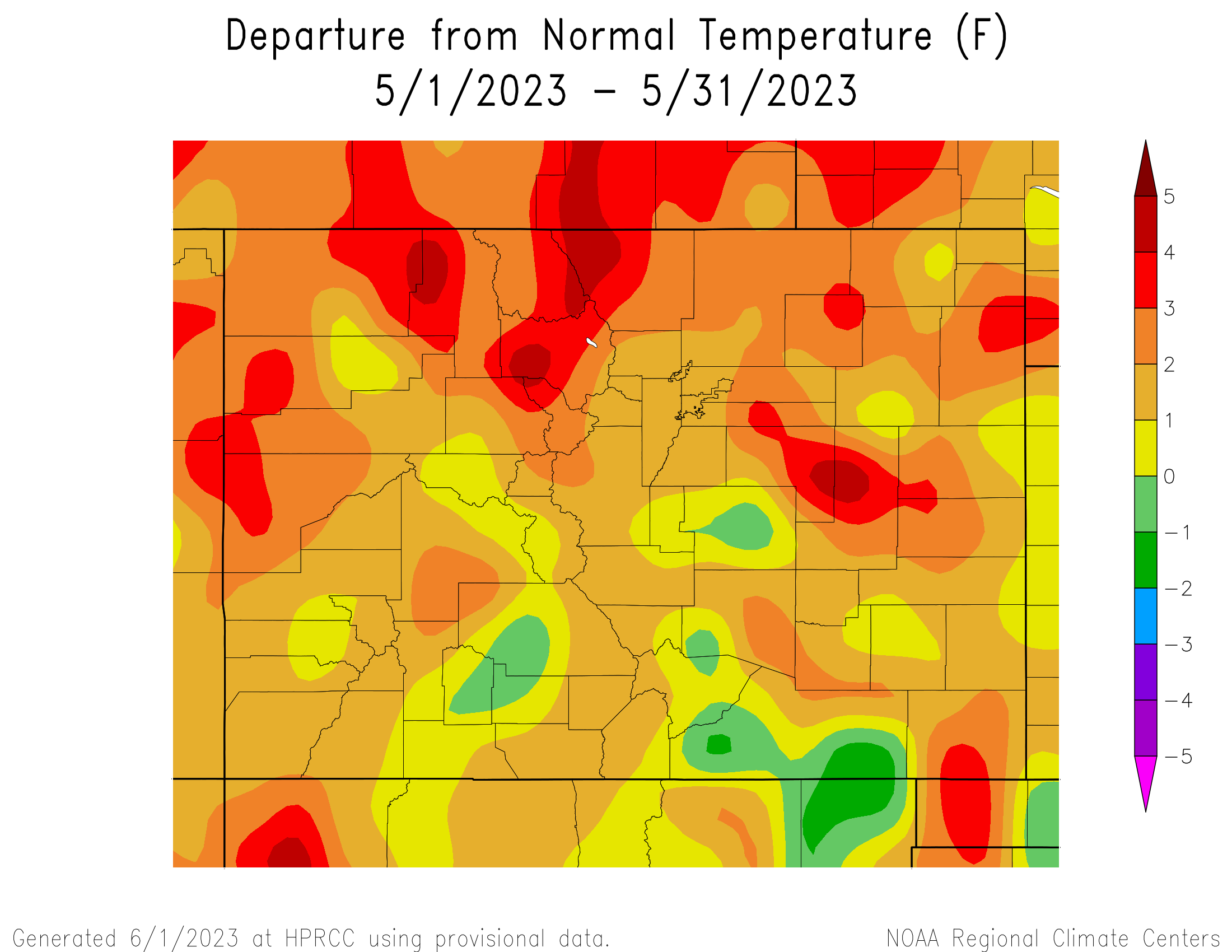 |
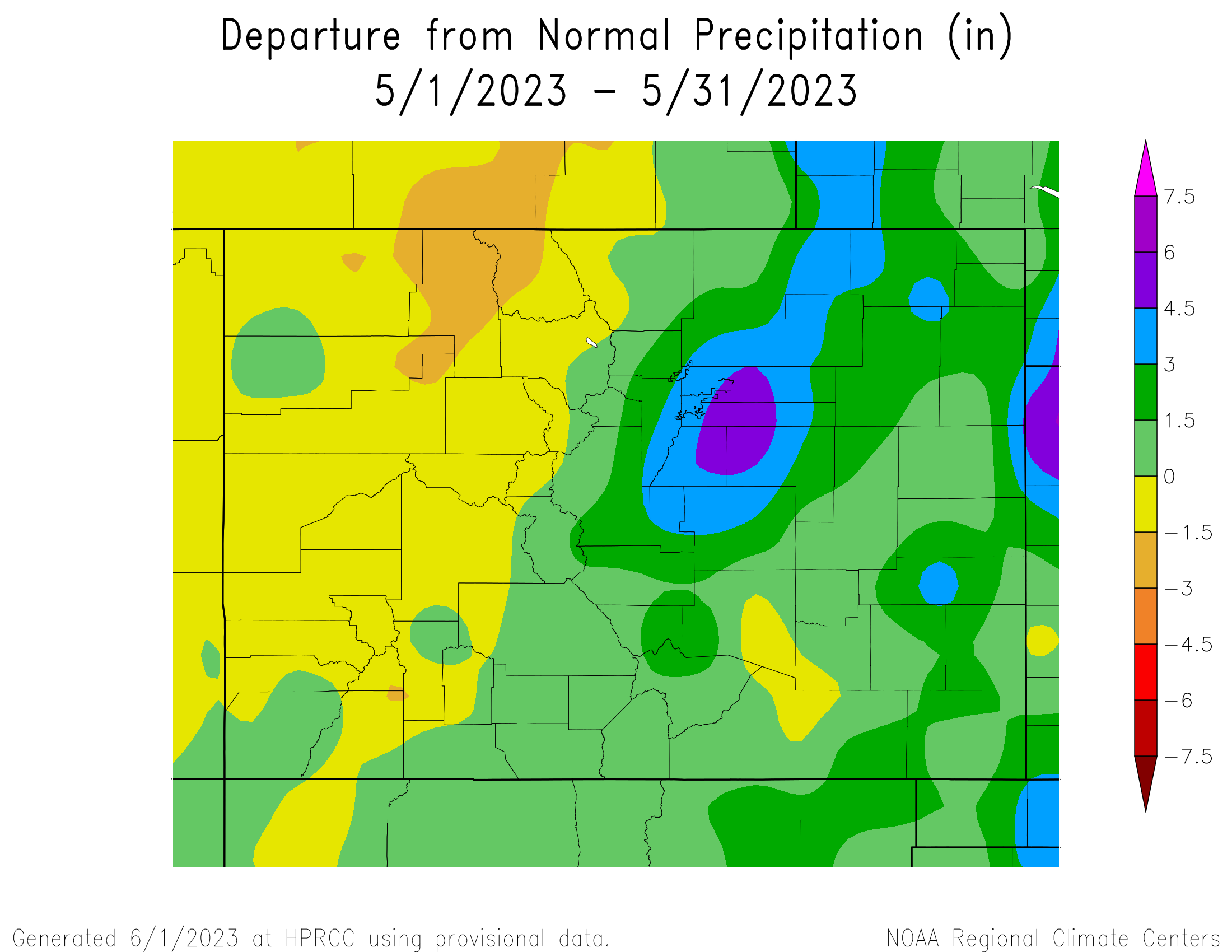 |
The preliminary average temperature in Alamosa for the past month of May was 52.9 degrees. This is 1.2 degrees above normal and makes May of 2023 tied with May of 1939, 1940, and 1954 as 19th warmest May on record in Alamosa. This is well behind the warmest May of 2020, when the average temperature was 56.0 degrees. The average May maximum temperature in Alamosa was 69.9 degrees, which is 0.1 degrees above normal. The average May minimum temperature in Alamosa was 35.8 degrees, which is 2.2 degrees above normal and comes in at the 11th warmest average May minimum temperature on record. Alamosa recorded 0.86 inches of precipitation through the month of May, which is 0.26 inches above normal. Alamosa recorded a trace of snow through the month of May. This keeps the Alamosa 2022-2023 seasonal snowfall total at 20.5 inches and makes the 2022-2023 season the 23rd least snowiest on record in Alamosa.
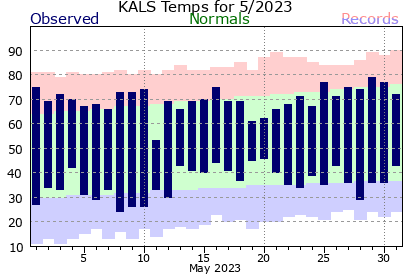 |
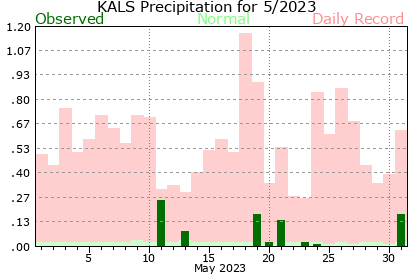 |
The preliminary average temperature in Colorado Springs for the past month of May was 58.4 degrees. This is 1.3 degrees above normal and makes May of 2023 the 18th warmest May on record in Colorado Springs. This is well below the warmest May of 2018, when the average temperature was 62.2 degrees. The average May maximum temperature in Colorado Springs was 70.3 degrees, which is 0.4 degrees below normal. The average May minimum temperature in Colorado Springs was 46.5 degrees. This is 3.0 degrees above normal and comes in as the 2nd warmest average May minimum temperature on record, just behind the 47.5 degrees average May minimum temperature recorded in 2018. Colorado Springs recorded 5.22 inches of precipitation through the month of May. This is 3.23 inches above normal and makes May of 2023 the 6th wettest May on record. This is well behind the wettest May of 2015, when 8.13 inches of precipitation was recorded in Colorado Springs. Colorado Springs did not record any snow through the month of May, which is 0.6 inches below normal. This keeps the Colorado Springs 2022-2023 seasonal snowfall total at 36.0 inches, which is 3.5 inches above normal to date, and makes the 2022-2023 snow season the 38th snowiest on record. Colorado Springs set a daily precipitation record on May 11th, with 3.18 inches of precipitation recorded. The 3.18 inches also sets a new daily maximum precipitation for the month of May, besting the previous May daily maximum precipitation of 2.34 inches on May 30th, 1935. In fact, the 3.18 inches recorded on May 11th, 2023 is the 7th wettest day on record in Colorado Springs, just behind the 4.50 inches recorded on September 14th, 2011, the 4.29 inches recorded on September 11th, 2008, the 4.27 inches recorded on April 15th, 1921, the 3.98 inches recorded on August 4th, 1999, the 3.64 inches recorded on July 7th, 1947 and the 3.63 inches recorded on July 29th, 1997.
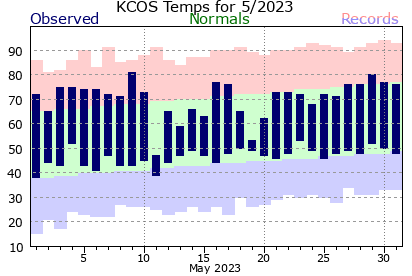 |
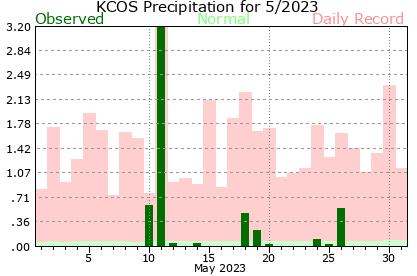 |
The preliminary average temperature in Pueblo for the past month of May was 63.9 degrees. This is 2.5 degrees above normal and makes May of 2023 the 13th warmest May on record. This is well behind the warmest May of 2018, when the average May temperature was 67.4 degrees. The average May maximum temperature in Pueblo was 78.4 degrees, which is 1.2 degrees above normal. The average May minimum temperature in Pueblo was 49.4 degrees, which is 3.8 degrees above normal and comes in as the 7th warmest average May minimum temperature on record. Pueblo recorded 1.14 inches of precipitation through the month of May, which is 0.43 inches below normal. Pueblo did not record any snow through the month of May, which is normal. This keeps the Pueblo 2022-2023 seasonal snowfall total at 19.1 inches, which is 9.2 inches below normal to date, and makes the 2022-2023 snow season the 17th lowest on record in Pueblo.
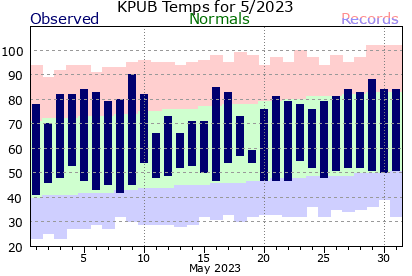 |
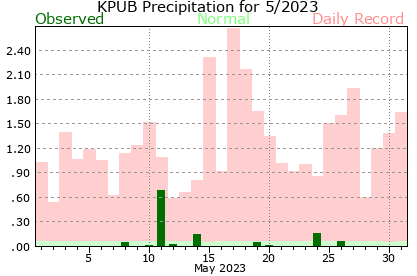 |
Looking ahead into June in Alamosa, the average high and low temperature of 76 degrees and 37 degrees on June 1st, warm to 83 degrees and 45 degrees by the end of the month. The average temperature for the month of June in Alamosa is 60.6 degrees. Alamosa averages 0.43 inches of precipitation through the month of June.
In Colorado Springs, the average high temperature and low temperature of 77 degrees and 49 degrees on June 1st, warm to 86 degrees and 56 degrees by the end of the month. The average temperature for the month of June in Colorado Springs is 67.2 degrees. Colorado Springs averages 2.27 inches of precipitation through the month of June. On average, June is the 3rd wettest month of the year in Colorado Springs.
In Pueblo, the average high temperature and low temperature of 84 degrees and 51 degrees on June 1st, warm to 93 degrees and 59 degrees by the end of the month. The average temperature for the month of June in Pueblo is 71.8 degrees. Pueblo averages 1.28 inches of precipitation through the month of June.
Below is the Climate Prediction Center's (CPC) temperature and precipitation outlook for the month of June, which gives equal chances of above, below and near normal temperatures and precipitation across the area, save for a slight nod to above normal precipitation across southeast Colorado.
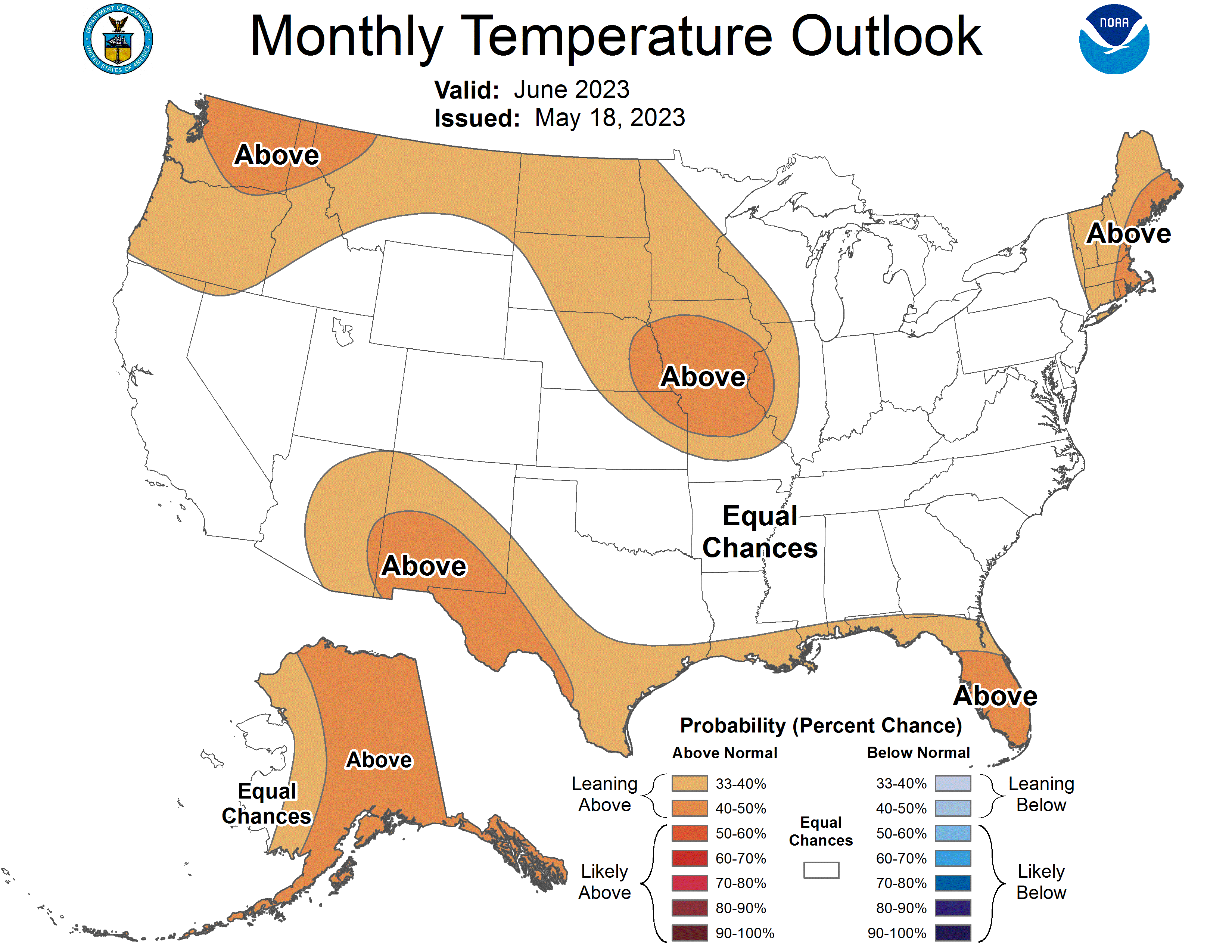 |
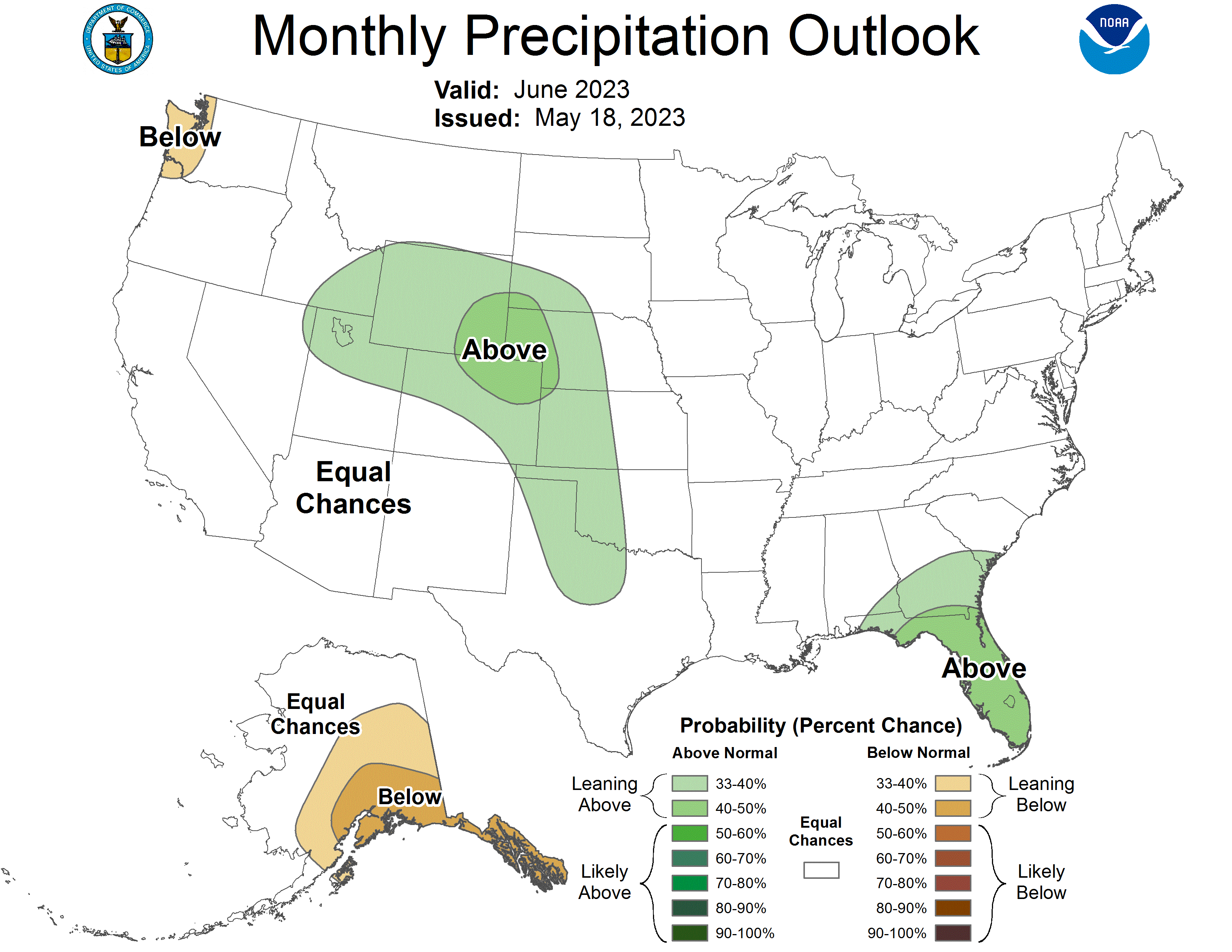 |